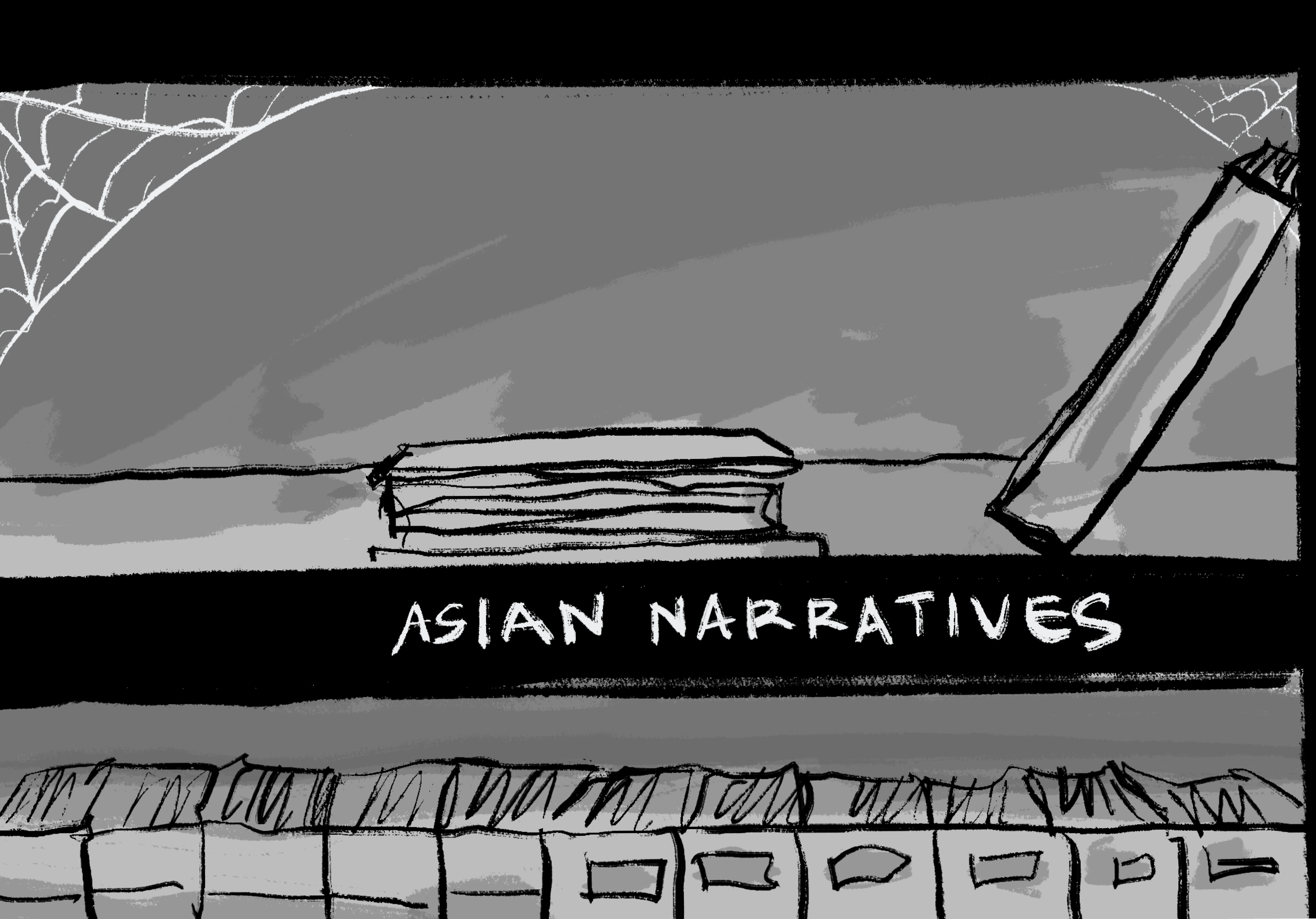A call to change histories of narrative scarcity
February 3, 2023
 This
piece represents the opinion of the author
.
This
piece represents the opinion of the author
.
 Kyra Tan
Kyra Tan“The reason why we have narrative scarcity is because we have economic scarcity, and people don’t have equal access to modes of storytelling,” Pulitzer-prize author Viet Thanh Nguyen once said. In a discussion with author Maxine Hong Kingston, he delved into the immense weight and pressure placed on literature told by writers from minority cultures. White people have an immense amount of representation in society via movies, books and other forms of artistic representation. Black and Latinx artists and activists have increasingly found ground to speak out. And both men and women have been able to speak out and influence change about offenses made against them for gender discrimination.
Meanwhile, the Asian community, particularly Asian women, have faced barriers in telling their stories due to a lack of representation among actors, authors and artists. Narrative scarcity plays a role in our daily lives in ways we don’t even notice, and it affects our general perception of minorities.
Few women in the media are able to regularly speak out about the lack of representation there, and those that do often can be burdened with the weight of speaking for an entire community. This often leads to many people believing the stereotypes and the accusations made against them: that women are fragile, inferior and weak. I consider the fact that too many people believe these stereotypes to be true, especially since I have experienced it personally. Coming from the Deep South as an Asian-American woman, where racism and male supremacy tend to be prevalent, I witnessed stereotypes impacting the way others viewed me. I went to a school that was made up of predominantly wealthy white students living in central Atlanta, who didn’t encounter the Asian community often. Due to few Asian students attending the school, we foreign students were singled out and targeted. And with no one to speak up on our behalf, what could we do but endure the humiliation and stay quiet in fear of being further attacked? The ranking of power went like this in my school: white men, POC men, white women and then POC women. Women of color had the least power and thus were targeted by the rest of the community.
Even communities that are considered to be diverse, attracting people with different cultures from all around the world, can’t capture the many nuances and intricacies that define being a person of color or coming from a marginalized group. Narrative scarcity has struck me as widespread in communities like Brunswick or Bowdoin, which lack diversity though diversity is claimed to be prevalent. Speaking with other POC, I feel a sense of solidarity in sharing moments that make us feel like outliers in a place where we are not the majority. It can be difficult to have the representation that we desire when located in predominantly white Brunswick attending a predominantly white institution.
However, that’s not to say that Bowdoin does not attempt to include those who are not in the majority. Minorities on Bowdoin’s campus seem to be more valued here than in comparison to other predominantly white communities, though sometimes we witness favoritism towards those with wealth and higher status. Since many of us hail from all around the world, our perception of minorities differs greatly. With some students having been shielded from a world of inclusion and equality and others having grown up as a minority, the classroom environment can sometimes be tense when a controversial topic comes up. At Bowdoin, we may have various classes and clubs that touch on current issues, but the atmosphere isn’t the same for all.
Narrative scarcity plays a major role in the real world in acting, social media, literature, visual art and more. This lack of representation paints a flawed picture, especially when it comes to minorities. Although Black and Latinx students are still in need of more representation, activism for these students on campus has become more prevalent. Asian-American women are at times lacking in this department for one of two reasons: either we lack the representatives to write, express and speak out for the community, or the media and society refuses to accept our pleas and attempts for our voice to be heard.
When we don’t get the full story, narrative scarcity forces us to view certain people through certain viewpoints, which results in individuals shaping these complex people into the one-dimensional stereotypes and accusations that have been claimed as true. Women on our campus have done a beautiful job of advocating for themselves and bringing an equal relationship between all the genders on campus, and we will continue to do so through our continued work to level the playing field for all to have equal opportunities at Bowdoin.

Comments
Before submitting a comment, please review our comment policy. Some key points from the policy: